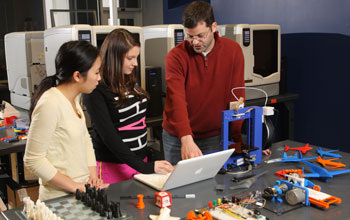How Is 3D Printing Changing The Education Sector?
With the help of 3D printing, a digital file can be turned into a 3D physical product. The technology has limitless potential and industries and governments all over the world are embracing this technology. 3D printing education is also gaining grounds all over the world and can completely transform the education sector. Let us have a look at how this technology can benefit the education sector.
Advancements in technology have transformed several sectors of our society by leaps and bounds. One such technological marvel is 3D printing. While there are limitless ways in which industries and governments can use this technology, it also has the potential of changing the education sector. Schools and universities all over the world are now experimenting with this technology and are gaining several advantages from it.
Let us have a look at how 3D printing can change the education sector.
1. Allows interaction between the physical world and 3D data
3D printing technology can be used to create a physical product from nothing. With this technology, students only need an idea and a bit of brainstorming to transform their idea into a physical product. This is one of the most important advantages of 3D printing as the applications of creating physical products from just an idea are limitless.

For instance, companies create several different versions of their product to make sure that the outcome is perfect or engineers are required to create models of the project before actually working on it. With the help of 3D printing, students get to learn about how their ideas can actually be turned into a reality. It inspires creativity and innovation in students.
2. 3D printing helps students understand concepts more clearly
3D printing education allows faculties to explain most complex of concepts in a simpler way. Also, as the students can see, touch and feel physical products, it makes it easier for them to understand the concepts in a much better way as compared to traditional classroom approaches.
For instance, aerospace engineering students can use 3D printing for creating airfoils that can be tested in the wind tunnel to understand various characteristics. Engineering colleges where the technology is already implemented have reported that the physical model keeps the students engaged and enables them to match the design specifications of actual models with the three-dimensional object that they have created.
3. Practical knowledge improves employment prospects
3D printing is also very important for the education sector across all the university levels as it allows students to go far beyond the traditional theoretical learning. They can put knowledge into practice before entering the industry they prefer.
An increasing number of industries are already using this technology in several ways. Thus, providing detailed knowledge of this technology to the students when they are in schools and colleges, increases their employment and ensures that they are well prepared for the future.
While technologies come and go, 3D printing is a technology that is bound to stay. While it is still very new for several countries, including India, the technology has all the potential required to transform the education sector completely.


















